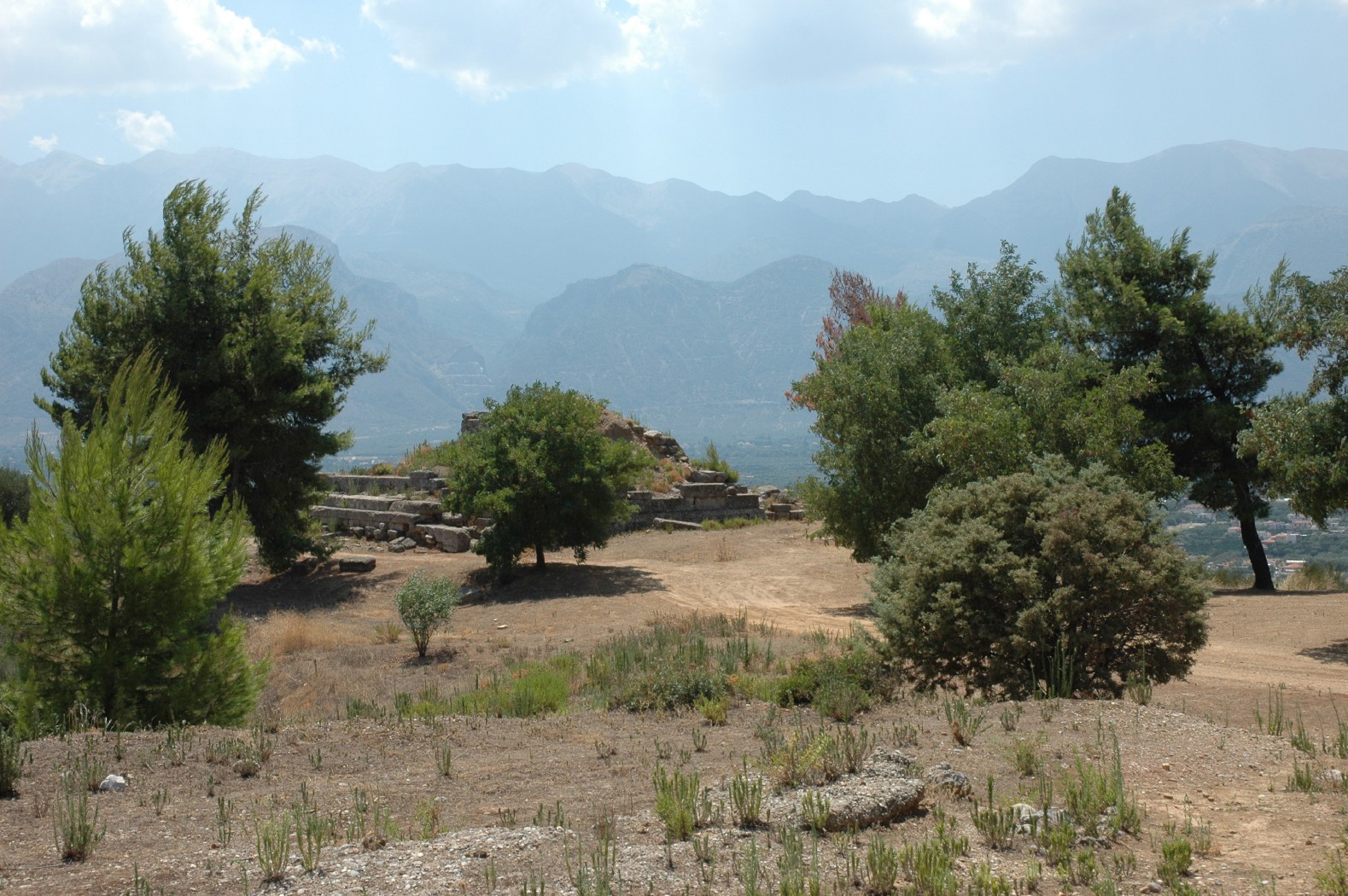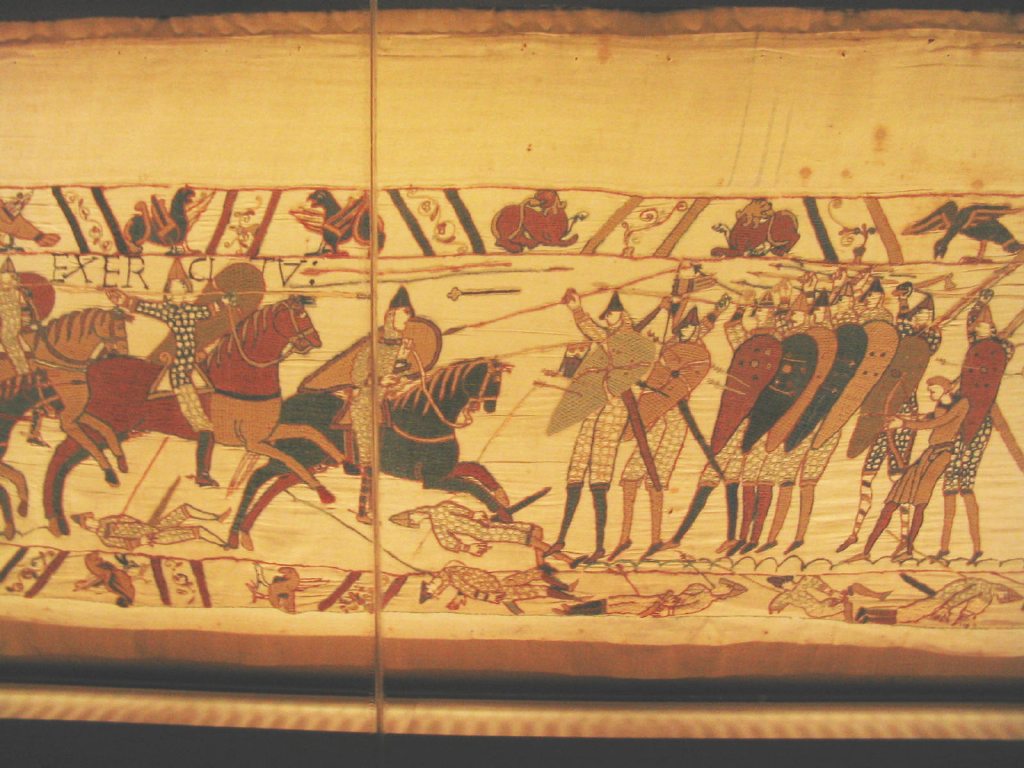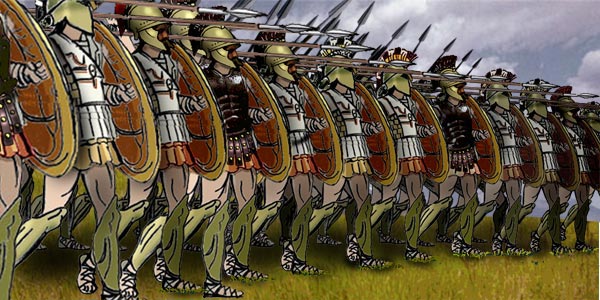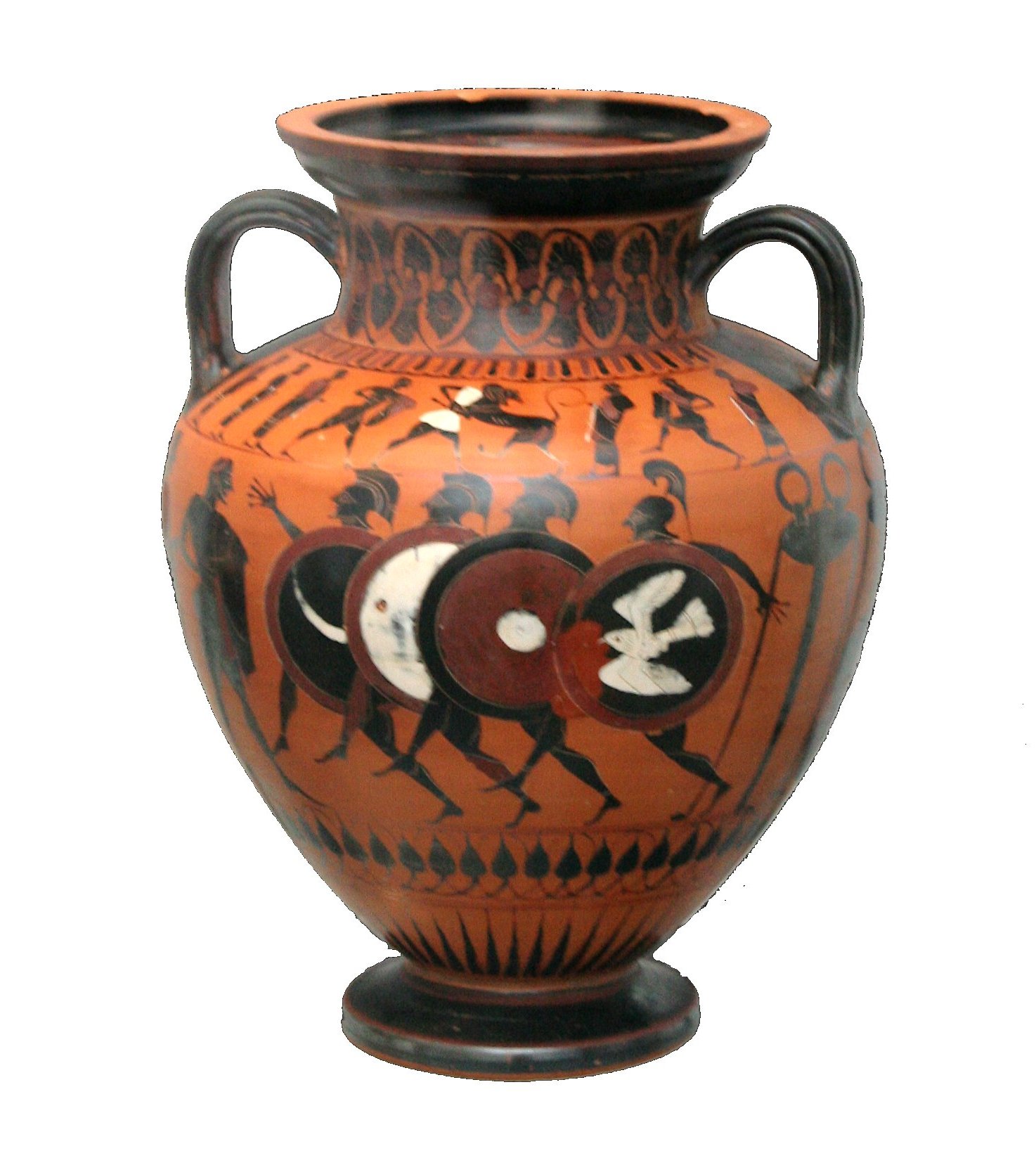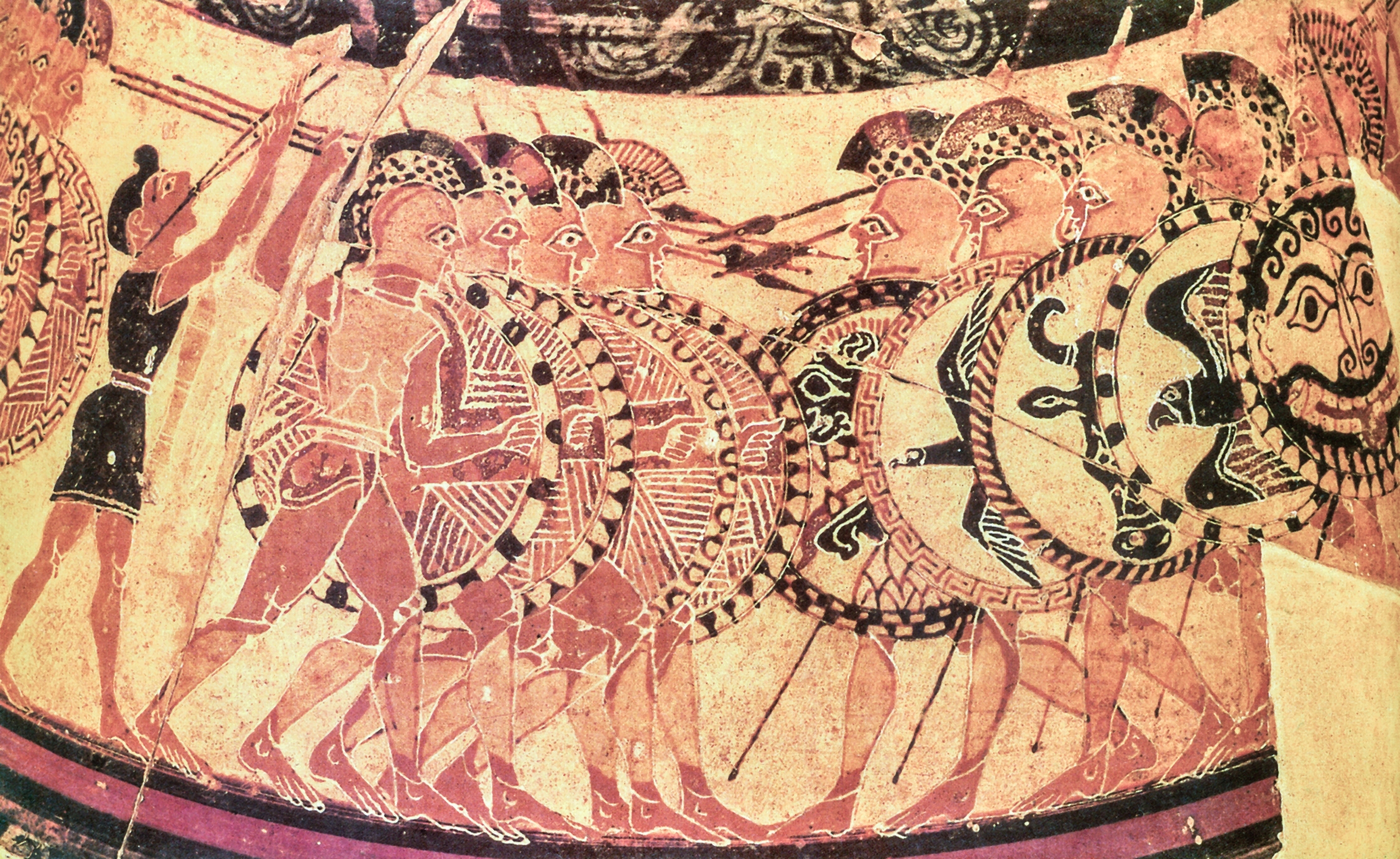|
Phalanx
The phalanx ( grc, φάλαγξ; plural phalanxes or phalanges, , ) was a rectangular mass military formation, usually composed entirely of heavy infantry armed with spears, pikes, sarissas, or similar pole weapons. The term is particularly used to describe the use of this formation in ancient Greek warfare, although the ancient Greek writers used it to also describe any massed infantry formation, regardless of its equipment. Arrian uses the term in his ''Array against the Alans'' when he refers to his legions. In Greek texts, the phalanx may be deployed for battle, on the march, or even camped, thus describing the mass of infantry or cavalry that would deploy in line during battle. They marched forward as one entity. The term itself, as used today, does not refer to a distinctive military unit or division (e.g., the Roman legion or the contemporary Western-type battalion), but to the type of formation of an army's troops. Therefore, this term does not indicate a standar ... [...More Info...] [...Related Items...] OR: [Wikipedia] [Google] [Baidu] |
Hoplite
Hoplites ( ) ( grc, ὁπλίτης : hoplítēs) were citizen-soldiers of Ancient Greece, Ancient Greek Polis, city-states who were primarily armed with spears and shields. Hoplite soldiers used the phalanx formation to be effective in war with fewer soldiers. The formation discouraged the soldiers from acting alone, for this would compromise the formation and minimize its strengths. The hoplites were primarily represented by free citizens – propertied farmers and artisans – who were able to afford a Linothorax, linen armour or a bronze armour suit and weapons (estimated at a third to a half of its able-bodied adult male population). Most hoplites were not professional soldiers and often lacked sufficient military training. Some states maintained a small elite professional unit, known as the ''wikt:επιλέγω, epilektoi'' ("chosen") since they were picked from the regular citizen infantry. These existed at times in Athens, Argos, Peloponnese, Argos, Thebes, Greec ... [...More Info...] [...Related Items...] OR: [Wikipedia] [Google] [Baidu] |
Sparta
Sparta (Doric Greek: Σπάρτα, ''Spártā''; Attic Greek: Σπάρτη, ''Spártē'') was a prominent city-state in Laconia, in ancient Greece. In antiquity, the city-state was known as Lacedaemon (, ), while the name Sparta referred to its main settlement on the banks of the Eurotas River in Laconia, in south-eastern Peloponnese. Around 650 BC, it rose to become the dominant military land-power in ancient Greece. Given its military pre-eminence, Sparta was recognized as the leading force of the unified Greek military during the Greco-Persian Wars, in rivalry with the rising naval power of Athens. Sparta was the principal enemy of Athens during the Peloponnesian War (431–404 BC), from which it emerged victorious after the Battle of Aegospotami. The decisive Battle of Leuctra in 371 BC ended the Spartan hegemony, although the city-state maintained its political independence until its forced integration into the Achaean League in 192 BC. The city neverthe ... [...More Info...] [...Related Items...] OR: [Wikipedia] [Google] [Baidu] |
Shield Wall
A shield wall ( or in Old English, in Old Norse) is a military formation that was common in ancient and medieval warfare. There were many slight variations of this formation, but the common factor was soldiers standing shoulder to shoulder and holding their shields so that they would abut or overlap. Each soldier thus benefited from the protection of the shields of his neighbors and his own. History Ancient history The formation was known to be used by many ancient armies including the Persian Sparabara, Greek phalanx, and the early Roman army, but its origin and spread is unknown. It may have developed independently more than once. Although little is recorded about their military tactics, the Stele of the Vultures depicts Sumerian soldiers in a shield wall formation during the third millennium BC. By the seventh century BC, shield walls in ancient Greece are well-documented. The soldiers in the shield wall formations were called hoplites, so named for thei ... [...More Info...] [...Related Items...] OR: [Wikipedia] [Google] [Baidu] |
Sumer
Sumer () is the earliest known civilization in the historical region of southern Mesopotamia (south-central Iraq), emerging during the Chalcolithic and early Bronze Ages between the sixth and fifth millennium BC. It is one of the cradles of civilization in the world, along with ancient Egypt, Elam, the Caral-Supe civilization, Mesoamerica, the Indus Valley civilisation, and ancient China. Living along the valleys of the Tigris and Euphrates rivers, Sumerian farmers grew an abundance of grain and other crops, the surplus from which enabled them to form urban settlements. Proto-writing dates back before 3000 BC. The earliest texts come from the cities of Uruk and Jemdet Nasr, and date to between c. 3500 and c. 3000 BC. Name The term "Sumer" (Sumerian: or , Akkadian: ) is the name given to the language spoken by the "Sumerians", the ancient non-Semitic-speaking inhabitants of southern Mesopotamia, by their successors the East Semitic-speaking Akkadians. The Sumerians ... [...More Info...] [...Related Items...] OR: [Wikipedia] [Google] [Baidu] |
Heavy Infantry
Heavy infantry consisted of heavily armed and armoured infantrymen who were trained to mount frontal assaults and/or anchor the defensive center of a battle line. This differentiated them from light infantry who are relatively mobile and lightly armoured skirmisher troops intended for screening, scouting, and other tactical roles unsuited to soldiers carrying heavier loads. Heavy infantry typically made use of dense battlefield formations, such as shield wall or phalanx, multiplying their effective weight of arms with force concentration. Heavy infantry were critical to many ancient armies, such as the Greek hoplites, Macedonian phalangites, and Roman legionaries. After the fall of Rome, heavy infantry declined in Europe but returned to dominance in the Late Middle Ages with Swiss pikemen and German Landsknechts. With the rise of firearms during early modern warfare, dense formations became increasingly hazardous, and heavy armours were either ineffective or too ... [...More Info...] [...Related Items...] OR: [Wikipedia] [Google] [Baidu] |
Spear
A spear is a pole weapon consisting of a shaft, usually of wood, with a pointed head. The head may be simply the sharpened end of the shaft itself, as is the case with fire hardened spears, or it may be made of a more durable material fastened to the shaft, such as bone, flint, obsidian, iron, steel, or bronze. The most common design for hunting or combat spears since ancient times has incorporated a metal spearhead shaped like a triangle, lozenge, or leaf. The heads of fishing spears usually feature barbs or serrated edges. The word '' spear'' comes from the Old English '' spere'', from the Proto-Germanic ''speri'', from a Proto-Indo-European root ''*sper-'' "spear, pole". Spears can be divided into two broad categories: those designed for thrusting as a melee weapon and those designed for throwing as a ranged weapon (usually referred to as javelins or darts). The spear has been used throughout human history both as a hunting and fishing tool and as a weapon. Alon ... [...More Info...] [...Related Items...] OR: [Wikipedia] [Google] [Baidu] |
Convergent Evolution
Convergent evolution is the independent evolution of similar features in species of different periods or epochs in time. Convergent evolution creates analogous structures that have similar form or function but were not present in the last common ancestor of those groups. The cladistic term for the same phenomenon is homoplasy. The recurrent evolution of flight is a classic example, as flying insects, birds, pterosaurs, and bats have independently evolved the useful capacity of flight. Functionally similar features that have arisen through convergent evolution are ''analogous'', whereas ''homologous'' structures or traits have a common origin but can have dissimilar functions. Bird, bat, and pterosaur wings are analogous structures, but their forelimbs are homologous, sharing an ancestral state despite serving different functions. The opposite of convergence is divergent evolution, where related species evolve different traits. Convergent evolution is similar to paralle ... [...More Info...] [...Related Items...] OR: [Wikipedia] [Google] [Baidu] |
Aspis
An aspis ( grc, ἀσπίς, plural ''aspides'', ), or porpax shield, sometimes mistakenly referred to as a hoplon ( el, ὅπλον) (a term actually referring to the whole equipment of a hoplite), was the heavy wooden shield used by the infantry in various periods of ancient Greece. Construction An aspis was deeply dished and made primarily of wood. Some had a thin sheet of bronze on the outer face, often just around the rim. In some periods, the convention was to decorate the shield; in others, it was usually left plain. The aspis measured at least in diameter and weighed about , and it was about thick. This large shield was made possible partly by its shape, which allowed it to be supported comfortably on the shoulder. The revolutionary part of the shield was, in fact, the grip. Known as an grip, it placed the handle at the edge of the shield and was supported by a leather or bronze fastening for the forearm at the center, known as the porpax. This allowed hoplite ... [...More Info...] [...Related Items...] OR: [Wikipedia] [Google] [Baidu] |
Ancient Argos
Argos (; el, Άργος ; grc, label= Ancient and Katharevousa, Ἄργος ) is a city in Argolis, Peloponnese, Greece and is one of the oldest continuously inhabited cities in the world, and the oldest in Europe. It is the largest city in Argolis and a major center for the area. Since the 2011 local government reform it has been part of the municipality of Argos-Mykines, of which it is a municipal unit. The municipal unit has an area of 138.138 km2. It is from Nafplion, which was its historic harbour. A settlement of great antiquity, Argos has been continuously inhabited as at least a substantial village for the past 7,000 years. A resident of the city of Argos is known as an Argive ( , ; grc-gre, Ἀργεῖος). However, this term is also used to refer to those ancient Greeks generally who assaulted the city of Troy during the Trojan War; the term is more widely applied by the Homeric bards. Numerous ancient monuments can be found in the city today. Agric ... [...More Info...] [...Related Items...] OR: [Wikipedia] [Google] [Baidu] |
Stele Of The Vultures (phalanx)
A stele ( ),Anglicized plural steles ( ); Greek plural stelai ( ), from Greek , ''stēlē''. The Greek plural is written , ''stēlai'', but this is only rarely encountered in English. or occasionally stela (plural ''stelas'' or ''stelæ''), when derived from Latin, is a stone or wooden slab, generally taller than it is wide, erected in the ancient world as a monument. The surface of the stele often has text, ornamentation, or both. These may be inscribed, carved in relief, or painted. Stelae were created for many reasons. Grave stelae were used for funerary or commemorative purposes. Stelae as slabs of stone would also be used as ancient Greek and Roman government notices or as boundary markers to mark borders or property lines. Stelae were occasionally erected as memorials to battles. For example, along with other memorials, there are more than half-a-dozen steles erected on the battlefield of Waterloo at the locations of notable actions by participants in battle. A traditi ... [...More Info...] [...Related Items...] OR: [Wikipedia] [Google] [Baidu] |
Chigi Vase
The Chigi vase is a Proto-Corinthian '' olpe'', or pitcher, that is the name vase of the Chigi Painter. It was found in an Etruscan tomb at Monte Aguzzo, near Veio, on Prince Mario Chigi’s estate in 1881. The vase has been variously assigned to the middle and late Proto-Corinthian periods and given a date of ca. 650–640 BC; it is now in the National Etruscan Museum, Villa Giulia, Rome (inv. No.22679). The vase stands 26 cm (10.2 inches) tall, which is modest compared to other Greek vases. Some three-quarters of the vase is preserved. It was found amidst a large number of potsherds of mixed provenance, including one bucchero vessel inscribed with five lines in two early Etruscan alphabets announcing the ownership of Atianai, perhaps also the original owner of the Chigi vase. Mythological scenes The Chigi vase itself is a polychrome work decorated in four friezes of mythological and genre scenes and four bands of ornamentation; amongst these tableaux is the earliest r ... [...More Info...] [...Related Items...] OR: [Wikipedia] [Google] [Baidu] |
Panoply
A panoply is a complete suit of armor. The word represents the Ancient Greek ('), where the word (') means "all", and (') means "arms". Thus, ''panoply'' refers to the full armor of a hoplite or heavily-armed soldier, i.e. the shield, breastplate, helmet, and greaves, together with the sword and spear A spear is a pole weapon consisting of a shaft, usually of wood, with a pointed head. The head may be simply the sharpened end of the shaft itself, as is the case with fire hardened spears, or it may be made of a more durable material fasten .... As applied to armor of a later date, ''panoply'' did not come into use until the end of the 16th and beginning of the 17th century, and was then used of the complete suits of plate armor covering the whole body. Because a panoply is a complete set of diverse components, the word ''panoply'' has come to refer to any complete or impressive collection. References External links * * Body armor Ancient Greek military equipm ... [...More Info...] [...Related Items...] OR: [Wikipedia] [Google] [Baidu] |
.jpg)

